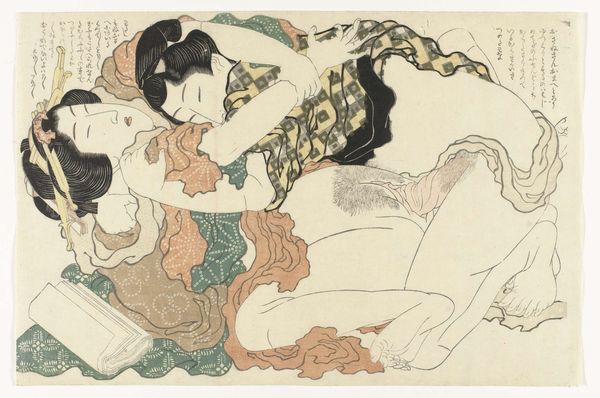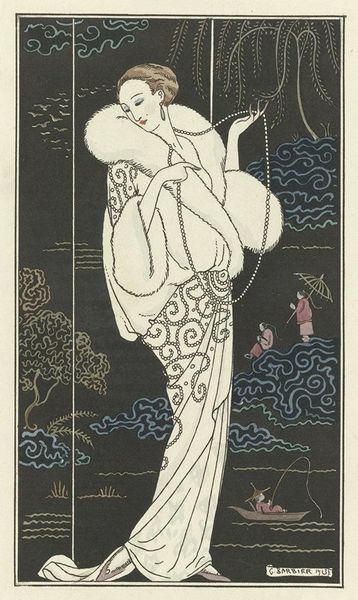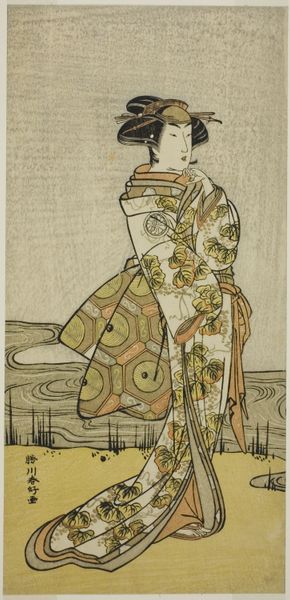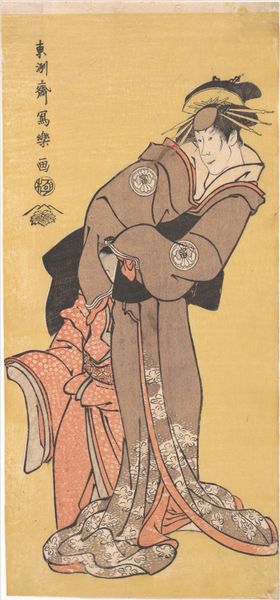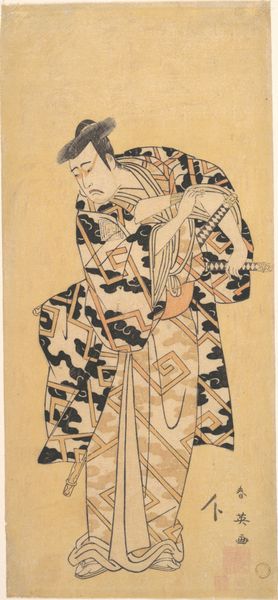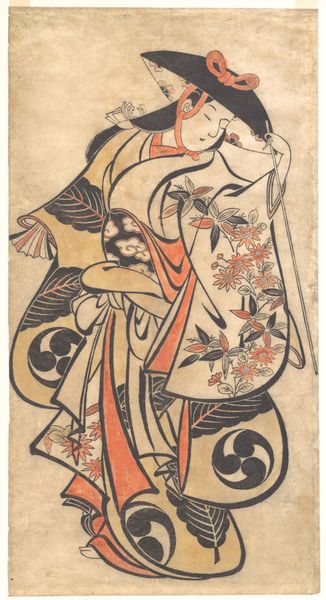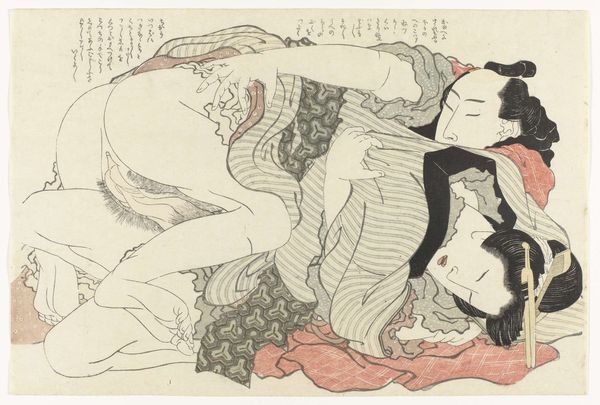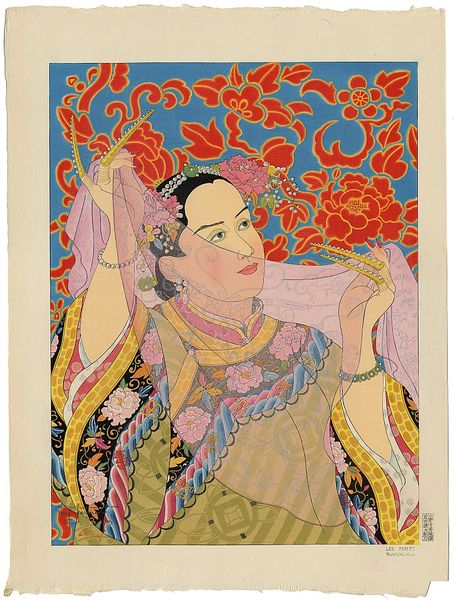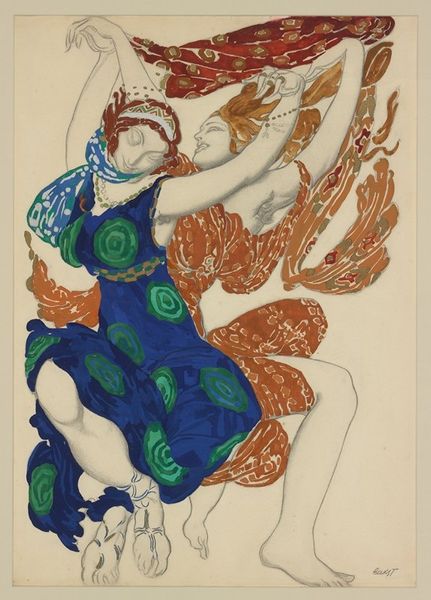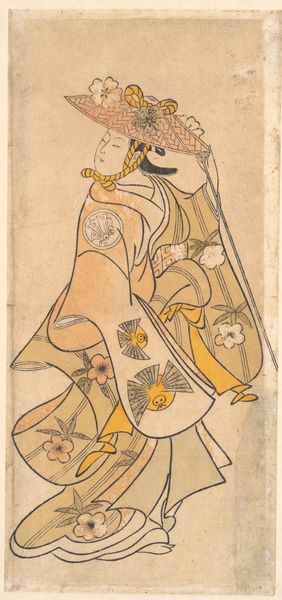
print, woodblock-print
#
ink drawing
#
ink painting
#
pen drawing
# print
#
asian-art
#
ukiyo-e
#
woodblock-print
#
nude
Dimensions: H. 12 5/16 in. (31.3 cm); W. 5 5/8 in. (14.3 cm)
Copyright: Public Domain
Editor: This is "Woman Disrobing," a woodblock print by Okumura Toshinobu, dating from sometime between 1715 and 1760. There's something very intimate about this image, the way she's caught in a private moment. What can you tell me about how this print might have been received in its time? Curator: This print is firmly within the ukiyo-e tradition, meaning “pictures of the floating world." Understanding that phrase is key. Consider how urban culture flourished in Edo-period Japan, with the rise of the merchant class. These prints weren’t high art for the elite, but rather a popular art form reflecting, and in turn shaping, contemporary tastes and social values. The imagery, especially concerning women, carried significant cultural weight. Editor: So it’s not just a simple nude study. Curator: Exactly. How do you think the depiction of a woman disrobing would be viewed within that societal framework? Ukiyo-e often presented idealized versions of courtesans and actresses. This print plays with notions of beauty, desirability, and the voyeuristic gaze that was cultivated by ukiyo-e culture. The circulation of such images in popular print challenged traditional social hierarchies by granting ordinary citizens a view into otherwise inaccessible lives. Editor: So it both reflects and influences social dynamics? Curator: Precisely. These prints were not passive reflections, but active agents in constructing identities, desires, and, importantly, commercial opportunities. Who was buying them? What kind of spaces were these prints displayed in, and how might that influence our interpretation? Consider the market forces at play in the commodification of beauty and sexuality. Editor: I see, it’s less about the individual woman and more about what she represents in that specific historical context. That really shifts how I view it. Curator: Indeed. Recognizing art as a cultural product embedded in its time lets us interrogate its broader impact, both then and now. Editor: Thanks! That context adds a whole new dimension to the work!
Comments
No comments
Be the first to comment and join the conversation on the ultimate creative platform.
